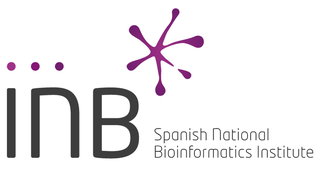Projects
ELIXIR unites Europe's leading life science organisations in managing and safeguarding the increasing volume of data being generated by publicly funded research. It coordinates, integrates and sustains bioinformatics resources across its 23 Nodes.
ELIXIR enables users in academia and industry to access services (databases, software, training,...
Cardiovascular disease (CVD) remains the leading cause of mortality worldwide, accounting for about a third of annual deaths. Refusing structured and unstructured data has the potential for significant health benefits for the population suffering from CVD. Healthcare data reuse in Europe faces privacy and fragmentation issues, high data formats and language diversity, and a...
We are devoted to the development of computational algorithms for LifeScience, using molecular modelling techniques, bioinformatics and machine learning methods.
Our molecular modeling software, PELE, is used worldwide through its public server, and commercialised through NBD since 2017, and clearly outperformed other tools in the CSAR blind...
The PPHA group focuses on the research of SW and HW solutions for the development, deployment and efficient execution of parallel and heterogeneous computing systems required to process huge amounts of data across the compute continuum, addressing edge, cloud and HPC. The group addresses the complete system stack: (1) HW solutions, by researching on highly parallel and energy...
The eProcessor ecosystem combines open source software (SW) and hardware (HW) to deliver the first completely open source European full stack ecosystem based on a new RISC-V CPU coupled to multiple diverse accelerators that target traditional HPC and extend into mixed precision workloads for High Performance Data Analytics (HPDA), (AI, ML, DL andBioinformatics). eProcessor...
The EXSCALATE4CoV (E4C) project aims to exploit the most powerful computing resources currently based in Europe to empowersmart in-silico drug design. Advanced Computer-Aided Drug Design (CADD) in combination with the high throughput biochemicaland phenotypic screening will allow the rapid evaluation of the simulations results and the reduction of time for the discovery ofnew...
The diversity, complexity and volume, as well as privacy and regulatory considerations, necessitate a collaborative and federated approach to life-science data. For scientists to find and share data across Europe and world-wide, ELIXIR needs to continuously develop and connect its services. The international ecosystem provided by ELIXIR with 220 institutes in 23 Nodes,...
TransBioNet was created in 2018 as part of the mission of the Spanish National Bioinformatics Institute (INB) to increase the translational impact of its activities in the Spanish National Health System (SNS). TransBioNet was born as an initiative open to all bioinformatics units and groups that develop their activity in hospital environments. Initially, the network was...
According to the 2014 European Society of Cardiology Guidelines, cardiomyopathies are defined as structural and functional abnormalities of the ventricular myocardium that are unexplained by flow limiting coronary artery disease or abnormalloading conditions. There are four major classifications of cardiomyopathy:
- hypertrophic (HCM),
- dilated...
INB, the Spanish National Bioinformatics Institute, was created in 2003 following the Swiss Bioinformatics Institute (SIB) model of a distributed organization of nodes with a central coordination hub. Since 2015, the INB is the Spanish node of ELIXIR (European Life Science Infrastructure for Biological Information). Since January 2018, the INB is the bioinformatics technology...
Pages
- 1
- 2







